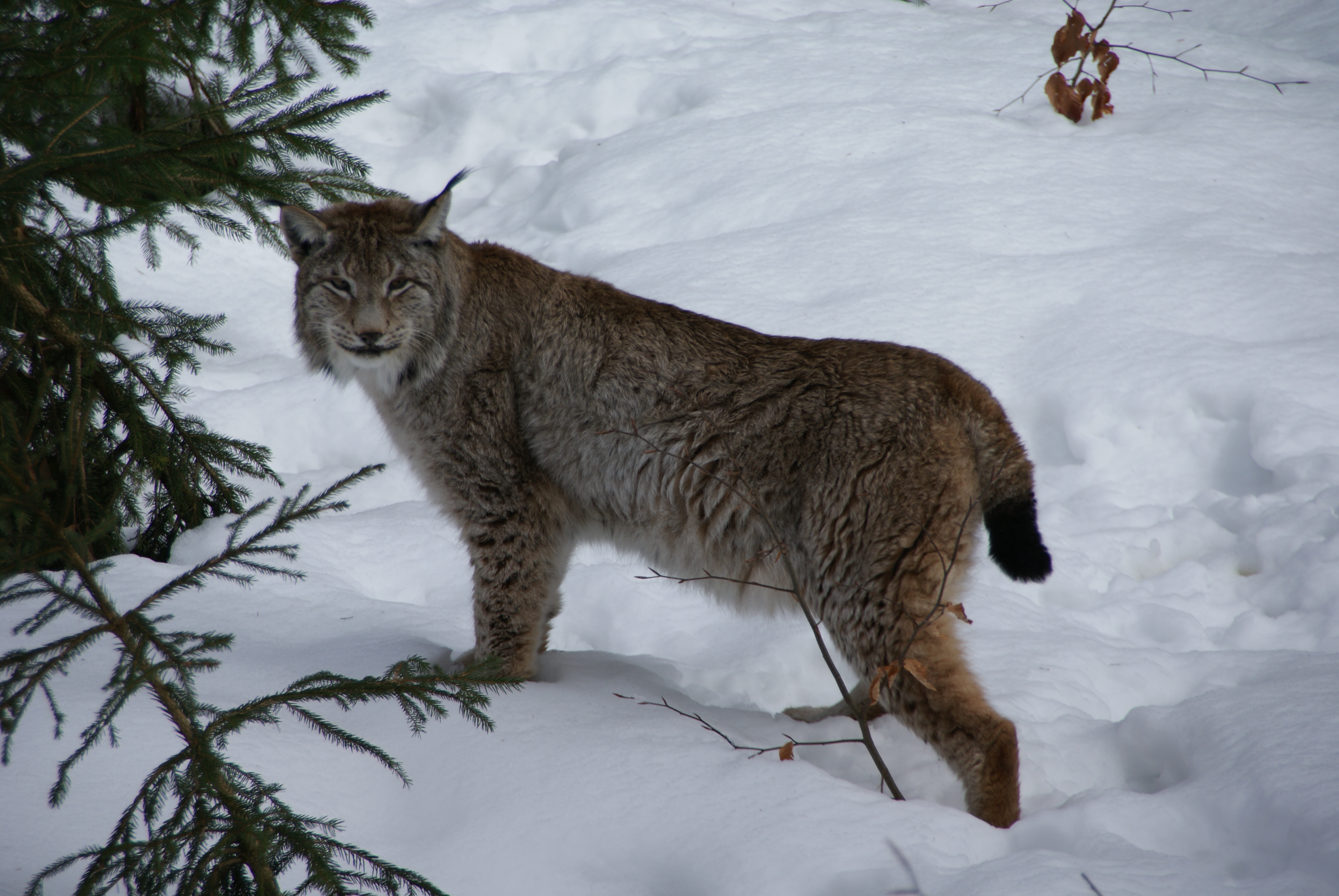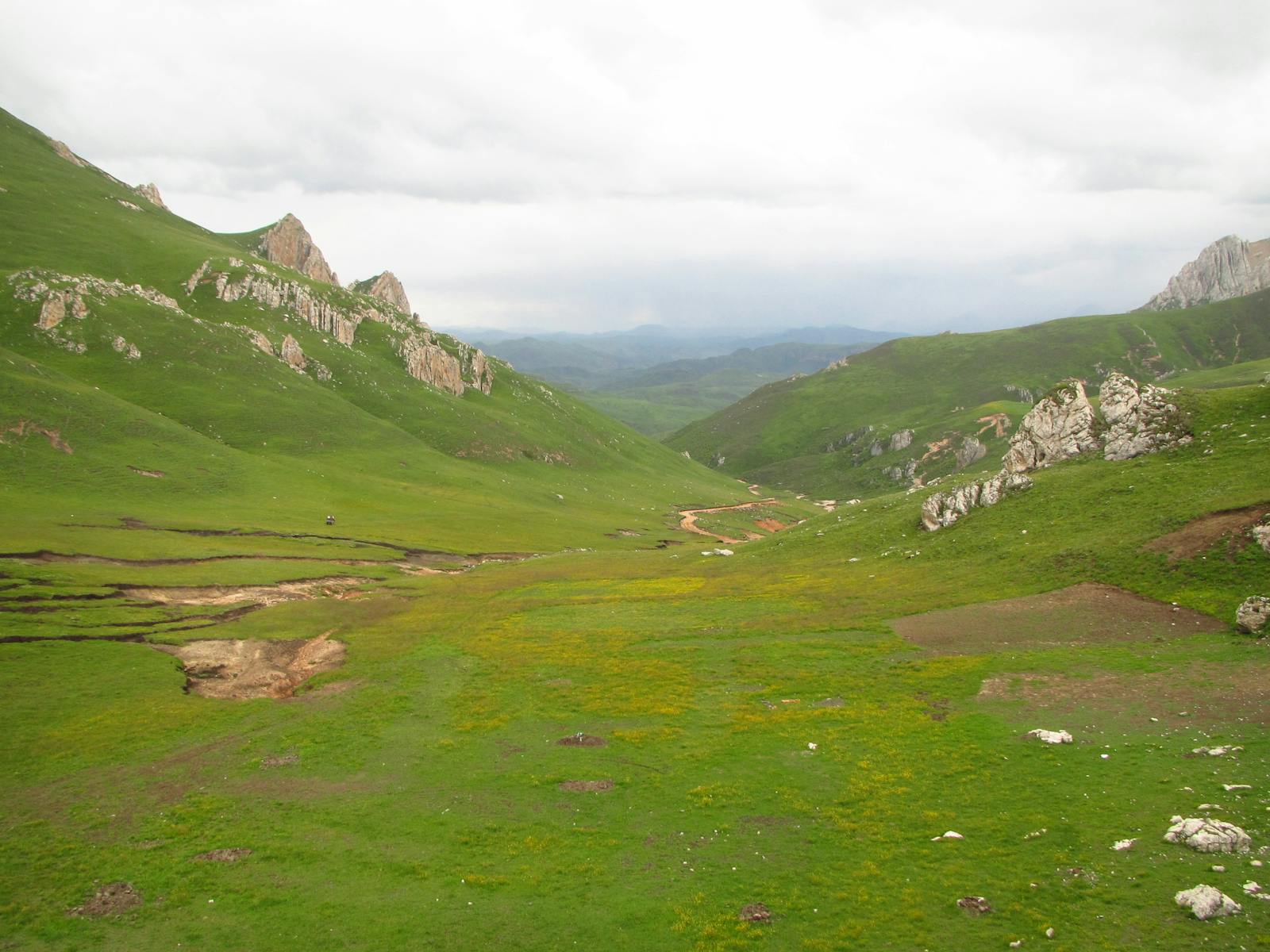Southeast Tibet Shrublands and Meadows
The ecoregion’s land area is provided in units of 1,000 hectares. The conservation target is the Global Safety Net (GSN1) area for the given ecoregion. The protection level indicates the percentage of the GSN goal that is currently protected on a scale of 0-10. N/A means data is not available at this time.
Bioregion: Greater Tibetan Plateau Alpine Meadows & Shrublands (PA40)
Realm: Eastern Eurasia
Ecoregion Size (1000 ha):
46,185
Ecoregion ID:
765
Conservation Target:
40%
Protection Level:
8
States: China
Abutting the highest mountain range in the world, the southeastern Tibetan Plateau supports an exceptionally moist alpine habitats that receive significant summer rainfall of up to 500 mm from the East Asian monsoon and are highly biologically productive. Here, meadows and moist alpine shrublands are widespread below 4,500 m elevation. In favorable locations, grass-like sedges in the genus Kobresia form a continuous turf that extends over tens of thousands of square kilometers, a landscape that appears to be promoted by anthropogenic livestock grazing activity.
_1_Dave%20Pape%20via%20wikimedia.jpg)
Flagship species: white-lipped deer. Wikipedia.
Tibet's southeastern margin has been deeply cut by river channels of the Lancang (Mekong), Jinsha (Upper Yantze), and their tributaries, dissecting the plateau surface and isolating strips of relic plateau between precipitous gorges. The convoluted outline of Tibet's margin here in the southeast is exceptional. Elsewhere, climate and tectonic activity have preserved the integrity of the plateau’s edge so that rivers either drain internally, or flow at a gentle gradient before plunging over an abrupt knickpoint.
Northwestward across this ecoregion, summer precipitation declines and the habitat transitions to a steppe meadow landscape where juniper replaces rhododendron. To the southeast, complex ecological transitions occur as the relatively flat plateau surface descends into a chaos of precipitous river valleys.
This ecoregion has remarkably high plant species richness, as expressed by plant taxa like Rhododendron, which grow in dwarfed alpine form, primrose and lousewort in wet meadow habitats, and the vividly colored Meconopsis poppies. This floristic trend, recognized a century ago, is supported by more recent studies with the qualification that endemic taxa are concentrated at the species level, with relatively few endemic genera. Unsurprisingly, Southeast Tibet is also the global center of diversity for Kobresia, the dominant, turf-forming sedge.

Eurasian lynx. Image credit: Creative Commons
Wild hoofed mammals that once roamed this ecoregion have been largely replaced by domestic livestock: yak, yak-cattle hybrids, and goats. A few large predators – snow leopard, lynx, and Himalayan wolf – may persist, but their population status is uncertain. Brown bear were recorded early in the 20th Century, but they are extirpated now.
White-lipped deer, endemic to the Tibetan Plateau, occur in small, widely dispersed groups throughout this ecoregion, frequenting high elevation shrublands and meadows in summer, retreating to forested elevations in winter. Blue sheep visit meadow habitat, but never stray far away from steep terrain where they can evade any predator. Argali and Tibetan gazelle, once present, have retreated westward to drier realms less intensely exploited by humans.
In 1995, conservation biologists identified a wild population of Tibetan red deer in hills to the east of Lhasa. This subspecies of elk, native to the southern Tibetan highlands and Bhutan and once widespread across the region, had by that time nearly disappeared. Today, the Wuqi Malu National Nature Reserve (1,200 km2) supports more than 8,000 individuals of Tibetan red deer, which browse the forest-grassland ecotone that flanks the gorge of the Jinsha River in its upper reaches, retreating into forest habitat under inclement conditions. Although this population is morphologically distinct from other red deer, its precise taxonomic status within the red deer species complex remains undetermined.
There are several concerns for the conservation of this ecoregion, which is one of the more heavily exploited parts of the Tibetan Plateau. Caterpillar fungus, harvested by local residents during late spring, is the economic mainstay for many counties, but involves significant ecological impacts. Yak-cattle hybrids, stocked at a high density for meat and milk production, require fencing that constrains the movement of wildlife and leads to overgrazing.
Meadows that are overgrazed become colonized by unpalatable plants like dock, stinging nettle, and Stellera chamaejasme whose foliage may prevent the herbivores from accessing the palatable plants. Finally, it has been noted that rodents and pika may proliferate to high density in the absence of their natural predators, with effects on the quality of the rangeland.
Priority conservation actions for the next decade are to: 1) manage livestock so as to minimize their impact on rangeland quality and populations of wild ungulates; 2) understand and regulate as necessary the harvest of caterpillar fungus; 3) manage conservation areas for white-lipped deer and Tibetan red deer; and 4) monitor effects of climate change.
Citations
Carpenter, C. 2000. Eastern Asia: Central China. https://www.worldwildlife.org/ecoregions/pa1020.
Miehe, G., Schleuss, P. M., Seeber, E., Babel, W., Biermann, T., Braendle, M., ... & Graf, H. F. 2017. The Kobresia pygmaea ecosystem of the Tibetan Highlands: origin, functioning and degradation of the world's largest pastoral alpine ecosystem. BioRxiv, 135558.
Harris, R.B. 2015. Cervus albirostris. The IUCN Red List of Threatened Species 2015: e.T4256A61976756. http://dx.doi.org/10.2305/IUCN.UK.2015-2.RLTS.T4256A61976756.en. Accessed April 2019.




